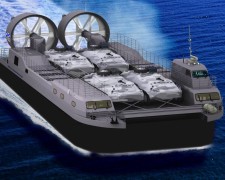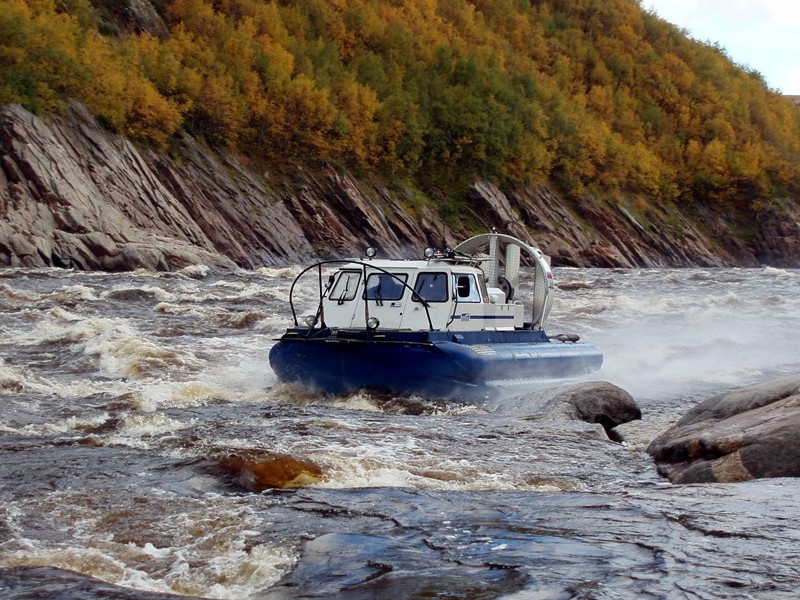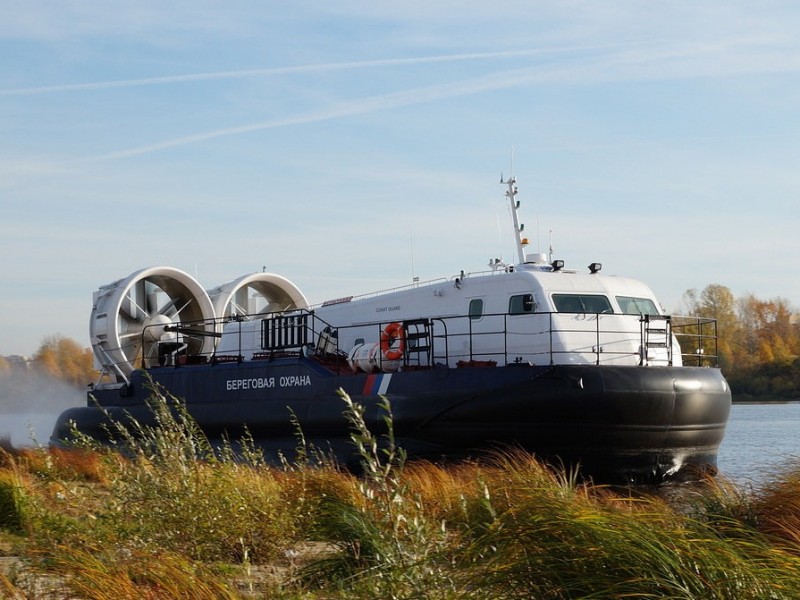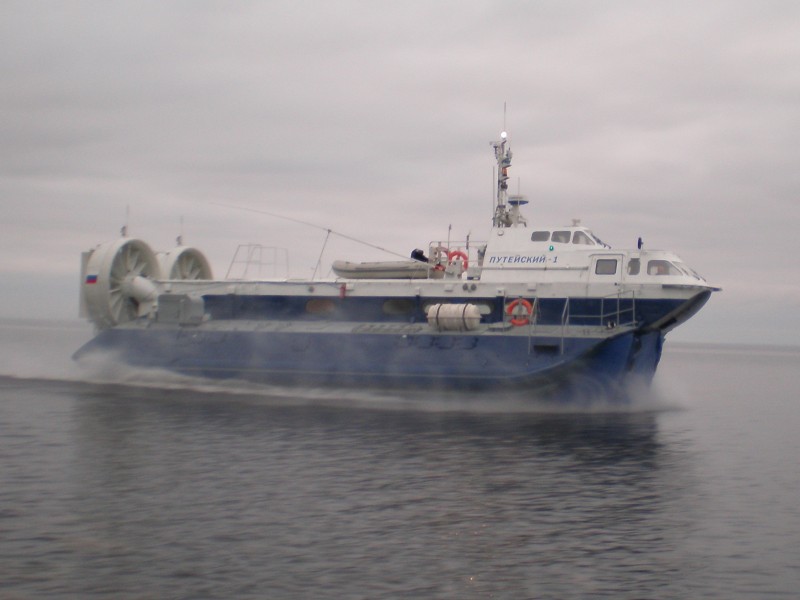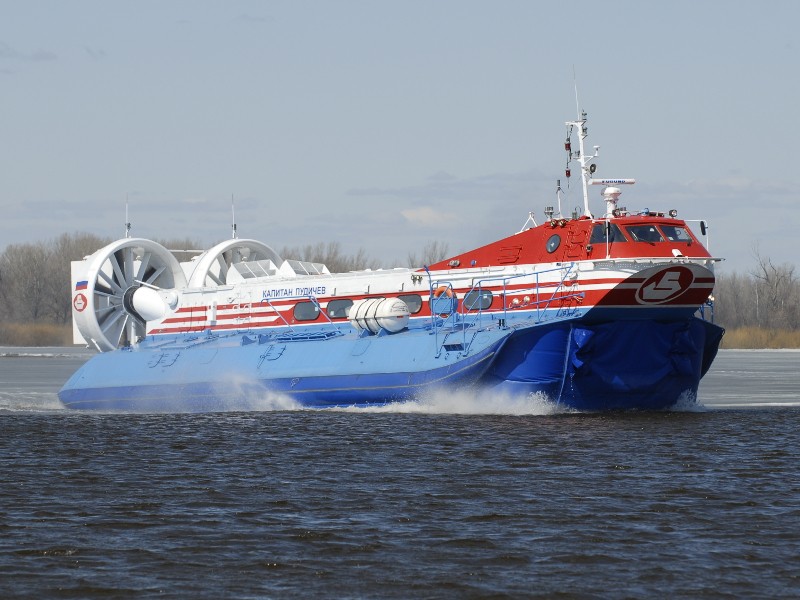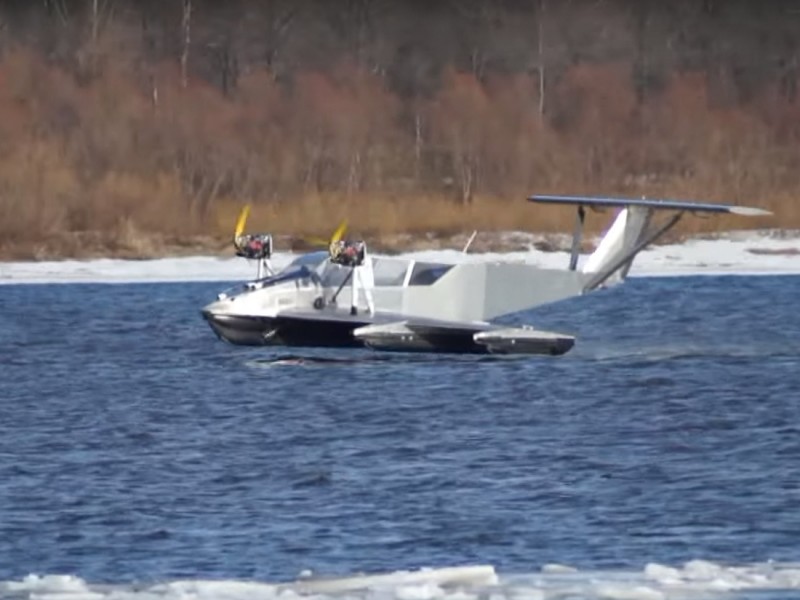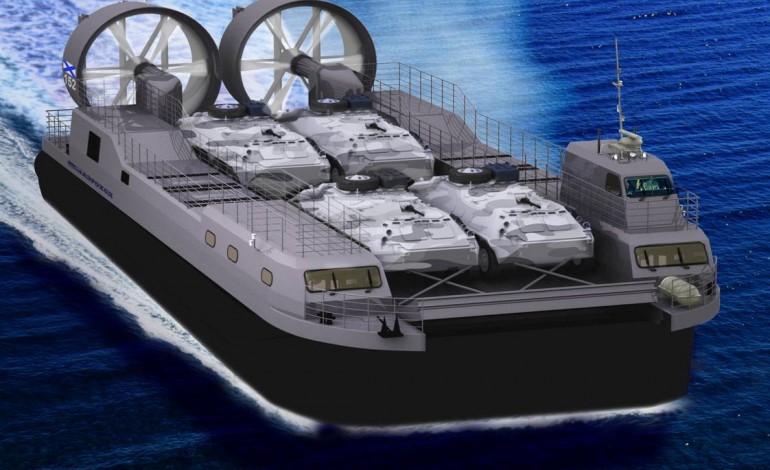
A300 hovercraft is designed for the following purposes:
– year-round freight transport on inland waterways and in coastal sea areas;
– transportation of heavy and oversized cargo, wheeled and tracked vehicles, drilling equipment and construction materials from lying out vessels to points not equipped with moorings.
Main characteristics
| Maximum payload, t | 45 |
| Length, m | 37,6 |
| Beam, m | 13,4 |
| Height, m | 10,3 |
| Cargo deck dimensions L х B, m | 19,5 x 7,5 |
| Minimum crew, prs. | 5 |
| Main power plant, h.p. | 4500 |
| Engine type | diesel |
| Speed, km/h | 90 |
| Range, km | 1000 |
| Russian Maritime Register of Shipping classification | КМ[2] HSC ACV Crew boat light ship |
| Service life, years | 20 |
Detailed description
Hull and superstructure. Material of hull and superstructure – aluminium-magnesium alloy. The connection elements of the hull and superstructure are rivets and argon-arc welding. Riveting of impermeable seams is made with sealants.
Air-cushion consists of longitudinal inflatable side and central balloons, transverse bow, stern and central skirts. The bottom surfaces of the air cushion are protected against wear and damages with polyurethane coating. The pressure regulation system in the lower balloons allows you to change the pressure in motion and during parking. Engine systems. Four diesel engines drive air cushion charging and propulsion systems.
Two engines drive propulsion system and two engines drive charging system via via clutch, toothed belts and drive shafts.
Engines. Six diesel engines are installed on the ship to drive the lifting and propulsion systems.
Two engines drive the lifting system and four engines drive the propulsion system via clutch, toothed belts and cardan shafts.
Propulsion system consists of four counter-rotating adjustable pitch propellers in rings. Hydraulic control system enables to change the angle of the blades and provides the reverse thrust by means of the main propellers.
The hovercraft is steered via air rudders installed behind the main propellers. Air rudders are driven by means of the hydraulic system.
Lifting system consists of 6 centrifugal superchargers. Each supercharger charges air into corresponding part of the air cushion.
Interior layout and equipment. A 19.5 x 7.5 m cargo deck a bow ramp for loading wheeled and tracked vehicles are provided for cargo placement.
Propulsion and steering system is located in the aft part of the vessel, the lifting system with air cushion superchargers is located in compartments on the left and starboard sides.
Wheelhouse is located in the bow on the port side.
Passengers are stationed in the bow compartments on the port and starboard sides.
Marine systems:
– power plant systems;
– steering system,
– air conditioning and ventilation system;
– drain system;
– fire-fighting system;
– water supply system;
– drainage system;
– windscreen cleaning system;
– balloon air pressure control system;
– system and mechanism diagnostic system;
– hydraulic system.
Electric equipment. On-board electric network is based on 24 V direct current.
Main electric power sources – engine-mounted alternators and batteries operating in a floating mode.
Diesel generator supplies 230 V and 380 V via 380/220 V converter.
Shore power supply – 380 V.
Radio and navigation equipment
Radio navigation and communication equipment includes:
– stationary VHF radio stations of marine and river range;
– portable VHF radio stations of the marine and river range;
– MF/HF radio station;
– radar station consisting of:
a) multi-function display;
b) radar antenna;
c) GPS/Glonass antenna;
– AIS transponder;
– radar responder;
– emergency beacon.
Rescue equipment
– life jackets;
– lifebuoys;
– lifeline;
– rescue raft.
Fire-fighting supplies
– aerosol fire extinguishing system;
– powder fire extinguishers;
– fire-fighting blankets;
– folding fire-fighting buckets;
– fire axe;
– crowbar-hook.
Navigation lights:
Top, circular, side green, side red, stern, flashing yellow light, pulse lights, pendant circular red light, white flag, black signal ball Ø300 mm.
Pyrotechnic devices:
– parachute ship rocket;
– red false fire.
Additional equipment:
– 12 V rechargeable batteries;
– charging and rectifying devices;
– energy converters 24/12 V, 24/230 V, 380/220 V;
– high beam headlights;
– fog lights;
– search lights;
– Matrosov anchor;
– anchor rope;
– mooring ropes;
– tow rope;
– inflatable fender;
– rebuff hook;
– anchor winch.
Delivered with the vessel:
– spare parts, tools and accessories;
– a set of tools for maintenance.




